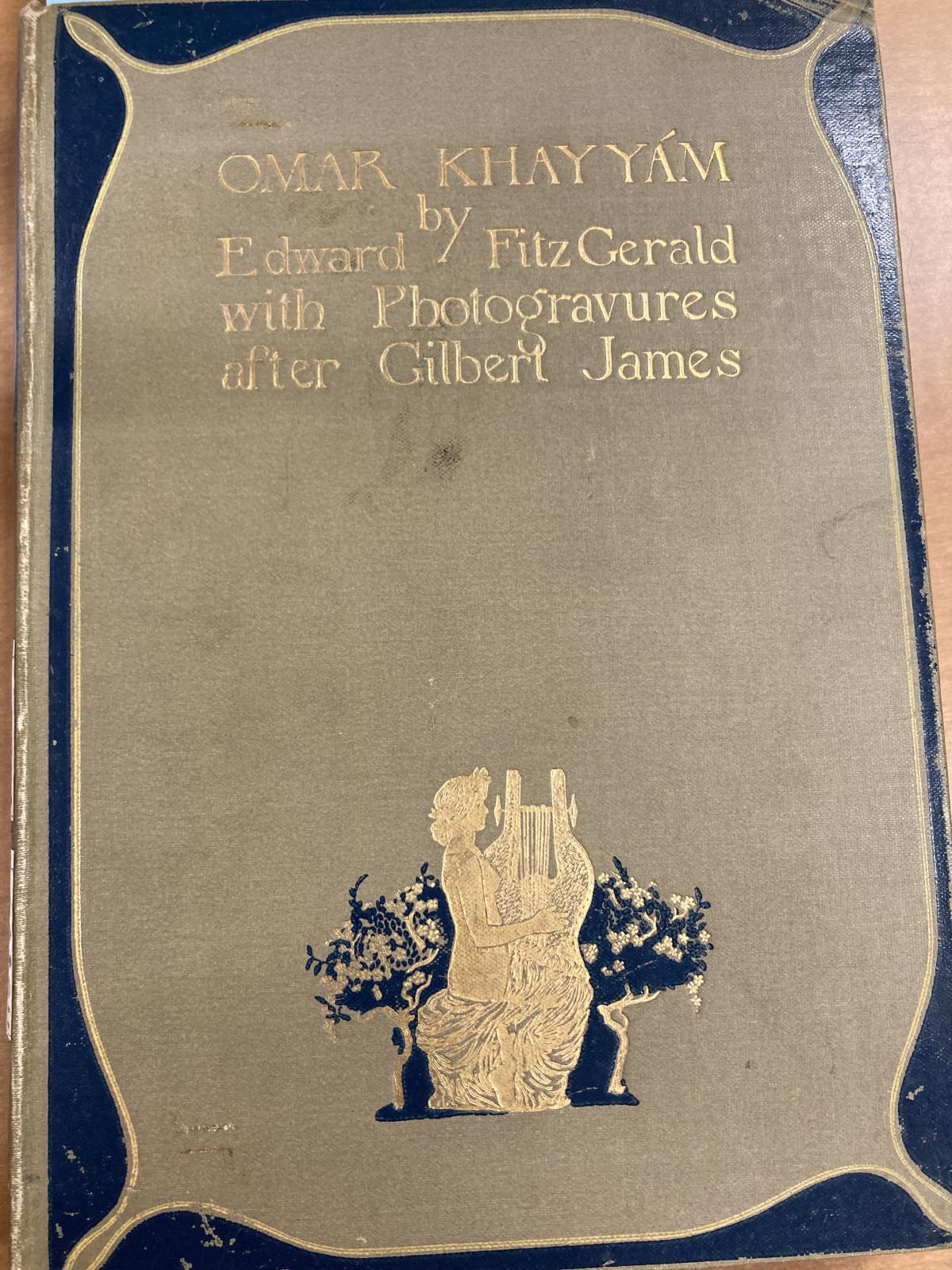Though there are countless editions of Omar Khayyam’s Rubaiyat, this second edition is especially significant due to its distinct gilded cover and rare, intricate photogravures, which will be examined more closely later. Published in 1905 and translated by Edward Fitzgerald, this 160-page book is a part of “The Photogravure Series”, as stated on the interior title page. The exact publisher of this edition is more difficult to pinpoint — the bottom of the title page reads “London”, which is followed by “George Routledge and Sons, Limited”, and below, “New York: E. P. Dutton and Co.” This likely means that this edition was originally published and circulated in London by Routledge, and later published in New York by Dutton. Closer inspection of a subsequent page suggests this edition was specifically published at The Edinburgh Press at 9 and 11 Young Street in 1904.
The book’s hardcover, Figure 1, seems gently worn — a gray-beige cloth with a dark blue border curving, gilded with a shimmery gold that stands out brightly against its background. There are a few places along the blue border that are scuffed or faded, but the book is overall in excellent condition, appearing sturdy. The bottom half of the cover features a completely gilded woman playing – what seems to be – a lyre with plants on either side of her. Each page in the book is slightly yellowed, alternating between illustrations and quatrains of the poem. The font is a serif font, reminiscent of old English typography.
An incredibly unique feature of this edition is the inscription on the inside of the cover, seen in Figure 2. “To the Rev: S. H. Holden”, it then states, “from W. E. de B. Whittaker”, appearing to be a gift note dated for “Xmas” of 1905.
The book is illustrated with twelve full-page, tissue-protected photogravures after drawings by Gilbert James. The photogravure is an engraving print process that was sometimes used between the 1880s-1910s to produce quality reproductions of images in ink. James’ illustrations are black-and-white, realistic depictions of people in various scenarios. Gilbert James (1865-1941) was a self-taught artist-illustrator with an art nouveau style, using strong contrasts and symbolic subjects often in an Eastern setting.
One such photogravure is Figure 3, which displays a woman smelling a flower in a garden surrounded by several pots of young trees, while a man sits on a bench near her, gazing at the flower with a pensive expression. In front of him is a small table with a pitcher, perhaps wine, a small pocketbook, and a bowl. Behind the two are trees, a body of water, and a setting or rising sun. The entire scene could be linked to several of Khayyam’s quatrains regarding the speaker’s desire to drink and enjoy life and nature. Another photogravure, in Figure 4, displays the woman and man lying in grass, him sitting up, her lying down, looking thoughtfully towards the ground and surrounded by plants, river, and distant mountains. Below ground, James illustrates roots wrapped around another woman — perhaps meant to represent Khayyam’s line regarding “ourselves to make a Couch”, a possible metaphor for dying and becoming a part of the earth.





